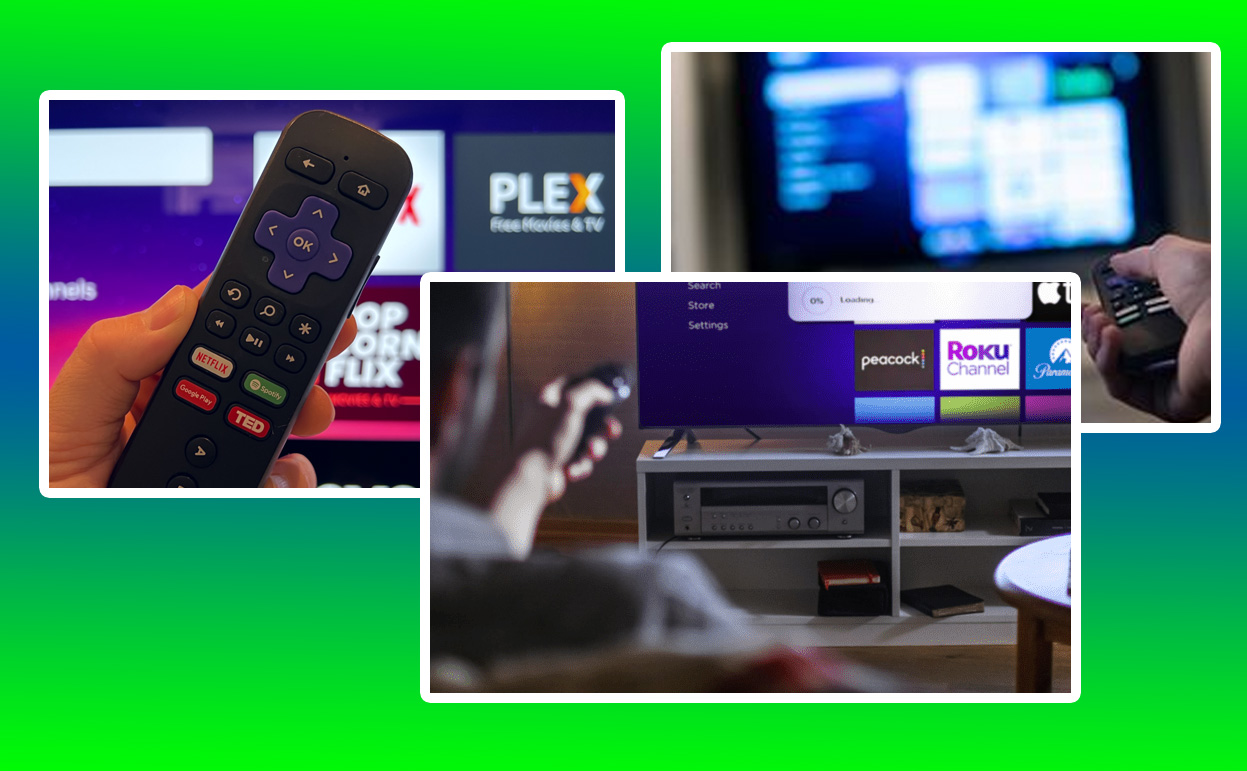Connecting your Roku remote to your TV without WiFi might seem like a daunting task, but it’s entirely possible and not as complicated as it may appear. In this guide, we’ll explore the various methods available for connecting your Roku remote to your TV without the need for a WiFi connection, detailing each step to ensure you can follow along easily.

Whether you’re dealing with an outage, setting up a new device, or simply prefer a non-WiFi solution, this article covers all the bases.
How to Connect Roku Remote to TV without WiFi
Before diving into the methods, it’s essential to understand the types of Roku remotes and their connection mechanisms. Roku remotes are generally categorized into two types: the IR (Infrared) remote and the Enhanced remote, which uses RF (Radio Frequency) or Bluetooth.
- IR Remote: This type requires a direct line of sight to the Roku device to function. It doesn’t need WiFi but relies on infrared signals to send commands.
- Enhanced Remote: Unlike the IR remote, this one can work without a direct line of sight and connects via RF or Bluetooth. Typically, these remotes require an initial pairing process, which is usually done over WiFi. However, there are ways to bypass this, which we’ll discuss.
Using an IR Remote to Connect Without WiFi
If you have an IR remote, connecting it to your Roku device is straightforward, as it doesn’t rely on a network connection. Here’s how to do it:
- Point the Remote Directly at the Roku Device: Since the IR remote communicates via infrared signals, it needs a clear, unobstructed path to the Roku’s IR sensor.
- Press Any Button to Test the Connection: If the Roku responds, your IR remote is connected and ready to use.
This method works perfectly for those who either have an IR remote or prefer not to use WiFi for their connection.
Pairing an Enhanced Remote Without WiFi
Enhanced remotes generally require WiFi for the initial pairing. However, if WiFi is not an option, there are still ways to connect your remote:
Using the Pairing Button:
- Turn On Your Roku Device: Plug in and power on your Roku.
- Press and Hold the Pairing Button: Usually located inside the battery compartment, hold this button until you see a light flashing on the remote.
- Wait for the Pairing Process to Complete: Your Roku should recognize the remote and pair automatically without needing a WiFi connection.
Through HDMI-CEC:
If you have a TV that supports HDMI-CEC, you can use your TV’s remote to control the Roku. Here’s how:
- Enable HDMI-CEC on Your TV: This can usually be done via the TV’s settings menu. Look for CEC, which might be branded differently depending on the manufacturer (e.g., Anynet+ for Samsung, SimpLink for LG).
- Connect the Roku to an HDMI Port: Ensure the Roku device is plugged into an HDMI port on your CEC-enabled TV.
- Use Your TV Remote to Control Roku: Once HDMI-CEC is enabled, your TV remote should work with the Roku device seamlessly.
Setting Up a Wired Connection
For users who prefer a wired connection to bypass the need for WiFi, connecting your Roku device directly to your router with an Ethernet cable is a viable solution:
- Connect the Ethernet Cable: Plug one end of the Ethernet cable into the Roku device and the other into your router.
- Set Up the Roku Device: Follow the on-screen instructions to set up your device. Since it’s connected via Ethernet, you don’t need WiFi for this process.
This method is especially useful for those who want a stable connection without relying on wireless networks.
Troubleshooting Common Issues
Even with these methods, you might encounter some issues while connecting your Roku remote without WiFi. Here are some common problems and their solutions:
Remote Not Responding:
- Check the Batteries: Ensure the batteries in your remote are fresh and properly inserted.
- Reset the Remote: Remove the batteries, unplug the Roku device, wait a few minutes, then reconnect everything.
Device Not Detecting the Remote:
- Repeat the Pairing Process: Sometimes the initial pairing attempt might fail, and repeating the process can help.
- Check for Interference: Make sure there are no obstructions or electronic devices that could interfere with the IR signal.
Table: Connection Methods
| Method | Requires WiFi | Ease of Use | Equipment Needed |
|---|---|---|---|
| IR Remote Connection | No | Easy | None |
| Enhanced Remote Pairing | No | Moderate | Enhanced Remote |
| HDMI-CEC | No | Easy | CEC-Enabled TV |
| Ethernet Connection | No | Moderate | Ethernet Cable |
Conclusion
Connecting your Roku remote to your TV without WiFi is entirely possible with a few alternative methods. Whether you’re using an IR remote, leveraging HDMI-CEC, or setting up a wired Ethernet connection, each approach offers a solution tailored to different needs and preferences. By understanding these methods, you can ensure your Roku device is always ready to deliver your favorite content without the reliance on a wireless network.
Also Check:
- Roku Remote Pairing Button: How to Easily Pair Your Roku Remote
- A Quick Fix: Roku Guest Mode Not Working
- Roku Green Light Blinking: What Does it Means and How to Fix It
- Roku Keeps Restarting: The Cause and Some Possible Work Around
- This Roku Remote Is Rechargeable, Saving You from Constant Battery Swaps
